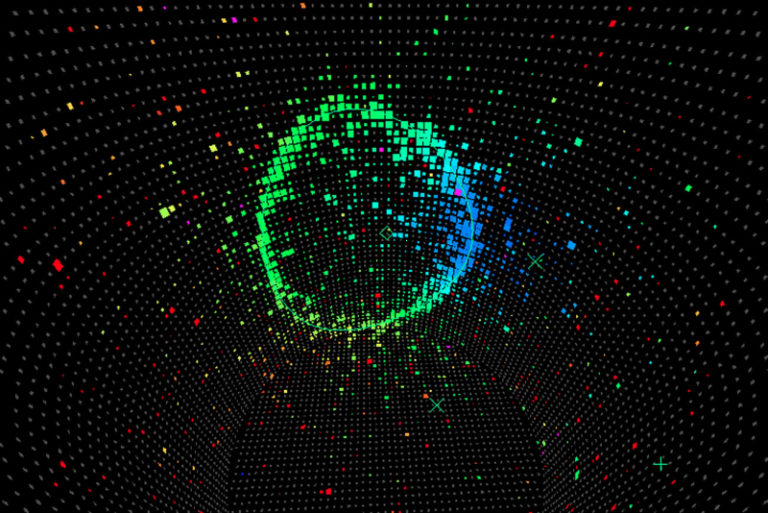

If a strange new particle actually exists, it would transform the foundations of particle physics and could help solve cosmic puzzles like the existence of dark matter, an unidentified inert substance that makes up the preponderance of the matter in the universe. An experiment at the Fermi National Accelerator Laboratory near Chicago has detected far more electron neutrinos than ever predicted — a possible sign of a revolutionary new elementary particle called the sterile neutrino.
The existence of a sterile neutrino would revolutionize physics from the smallest to the largest scales, reports Natalie Wolchover for Quanta magazine. It would finally break the Standard Model of particle physics that has reigned since the 1970s. It would also demand “a new standard model of cosmology,” Dodelson said. “There are other potential cracks in the standard picture,” he added. “The neutrino paradox could point our way to a new, better model.”
Physicists are both thrilled and baffled by a new report from a neutrino experiment at Fermi National Accelerator Laboratory near Chicago, continues Wolchover. The MiniBooNE experiment has detected far more neutrinos of a particular type than expected, a finding that is most easily explained by the existence of a new elementary particle: a “sterile” neutrino that’s even stranger and more reclusive than the three known neutrino types. The result appears to confirm the anomalous results of a decades-old experiment that MiniBooNE was built specifically to double-check.
The new study was conducted with a neutrino detector called MiniBooNE, while the previous neutrino excess was found with a different apparatus, the Liquid Scintillator Neutrino Detector, which operated in the 1990s at Los Alamos National Laboratory in New Mexico. “We have two very different detectors … and we have the same results,” says MiniBooNE physicist En-Chuan Huang of Los Alamos National Laboratory.
Neutrinos come in three known types: electron neutrinos, muon neutrinos and tau neutrinos, named after the electron and its two heavier cousins, muons and taus. Strangely, neutrinos can morph from one type to another: A particle born as a muon neutrino might later be detected as an electron neutrino.
Hints of excess neutrinos have shown up in earlier results from MiniBooNE, which has been operating since 2002 at Fermilab in Batavia, Ill. But the new research includes twice as much data, making the neutrino deluge too strong to ignore.
Some more skeptical physicists are questioning whether the excess signals are really from neutrinos. “The events … are real. The question is, what are they?” says neutrino physicist Jonathan Link of Virginia Tech in Blacksburg. The apparent neutrino surplus could be a red herring: Other particles can interact in ways that mimic neutrinos.
The persistence of the neutrino anomaly is extremely exciting, said the physicist Scott Dodelson of Carnegie Mellon University. It “would indicate that something is indeed going on,” added Anže Slosar of Brookhaven National Laboratory.
“I’m very excited about this result, but I am not ready to say ‘Eureka!’” said Janet Conrad, a neutrino physicist at the Massachusetts Institute of Technology and a member of the MiniBooNE collaboration.
“We would have no reason to expect 1-eV sterile neutrinos,” said Matthew Buckley, a particle physicist at Rutgers University. “Not that this has stopped the universe from adding new particles in the past.”
“It’s clear there’s something to be understood, and I certainly hope it’s a fourth neutrino,” said Neal Weiner, a theoretical physicist at New York University. “That said, this would be the first discovered particle beyond the Standard Model, so the threshold for the evidence is obviously very high.” For now, he said, “I am taking a slight wait-and-see approach.”
A more definitive answer will come with future experiments, including one called IsoDAR, proposed by Conrad and many of her colleagues. Rather than counting the number of neutrinos of a given flavor at the end of a beam, it will catch sight of neutrinos wiggling back and forth between different flavors as they travel, which will give a fuller picture of the oscillations.
“I am not ready to bet my money yet because the excess is kind of a blob” on a plot, Conrad said. “What if something else can make a blob? To be really convinced, I want to see, with high significance, this predicted wiggle.”